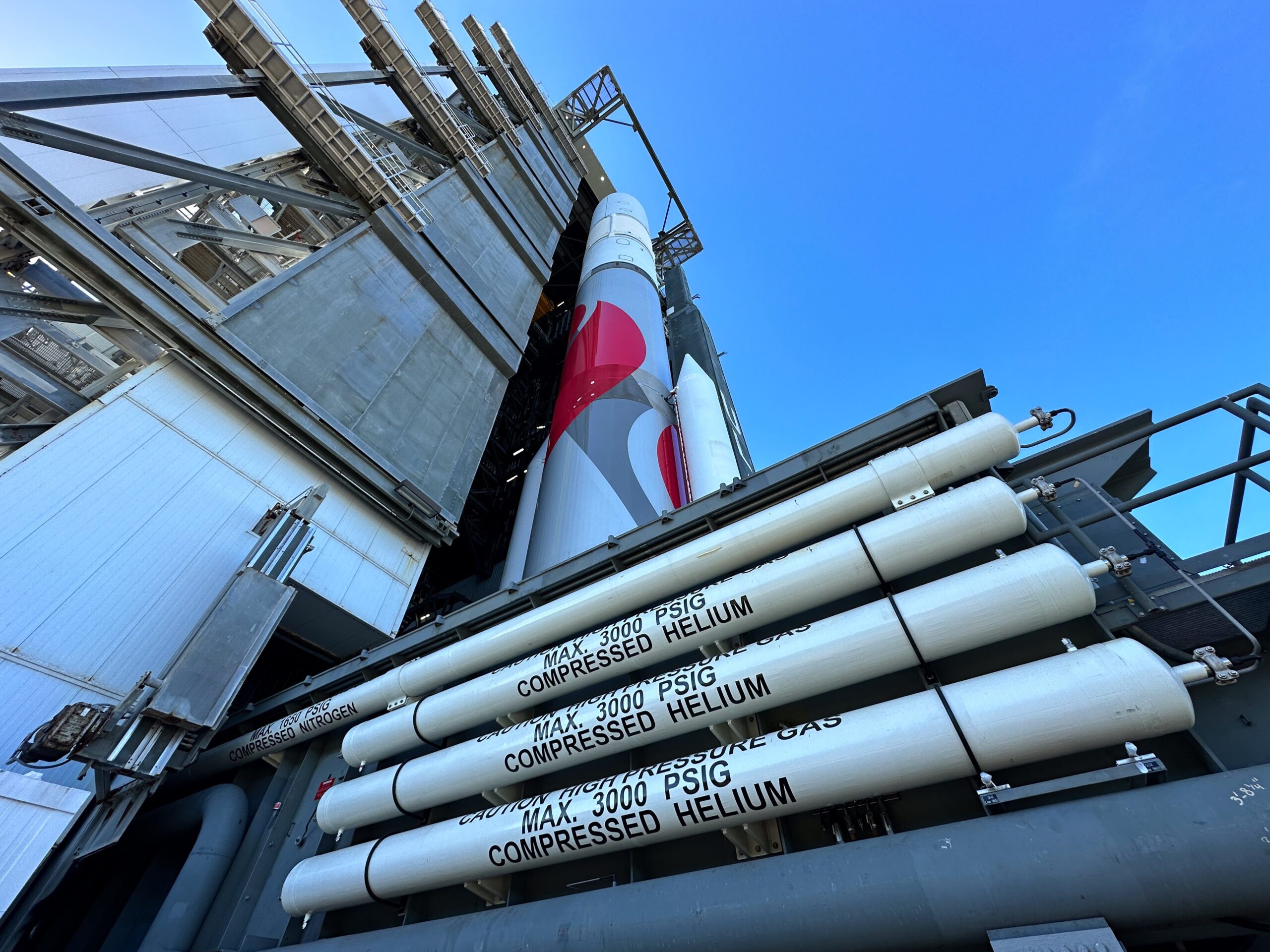
In a critical step towards Monday’s scheduled maiden voyage of the Vulcan-Centaur heavylifter, United Launch Alliance (ULA) today rolled-out the 202-foot-tall (61-meter) behemoth from the Vertical Integration Facility (VIF) to Space Launch Complex (SLC)-41 at Cape Canaveral Space Force Station, Fla. The giant rocket—which ULA intends ultimately to replace its in-service Atlas V and soon-to-be-retired Delta IV fleets—has been a decade in the making and its long-awaited certification mission (dubbed “Cert-1”) will deliver Astrobotic’s Peregrine lander to the surface of the Moon and the “Enterprise Flight” memorial payload into deep space for Celestis, Inc.
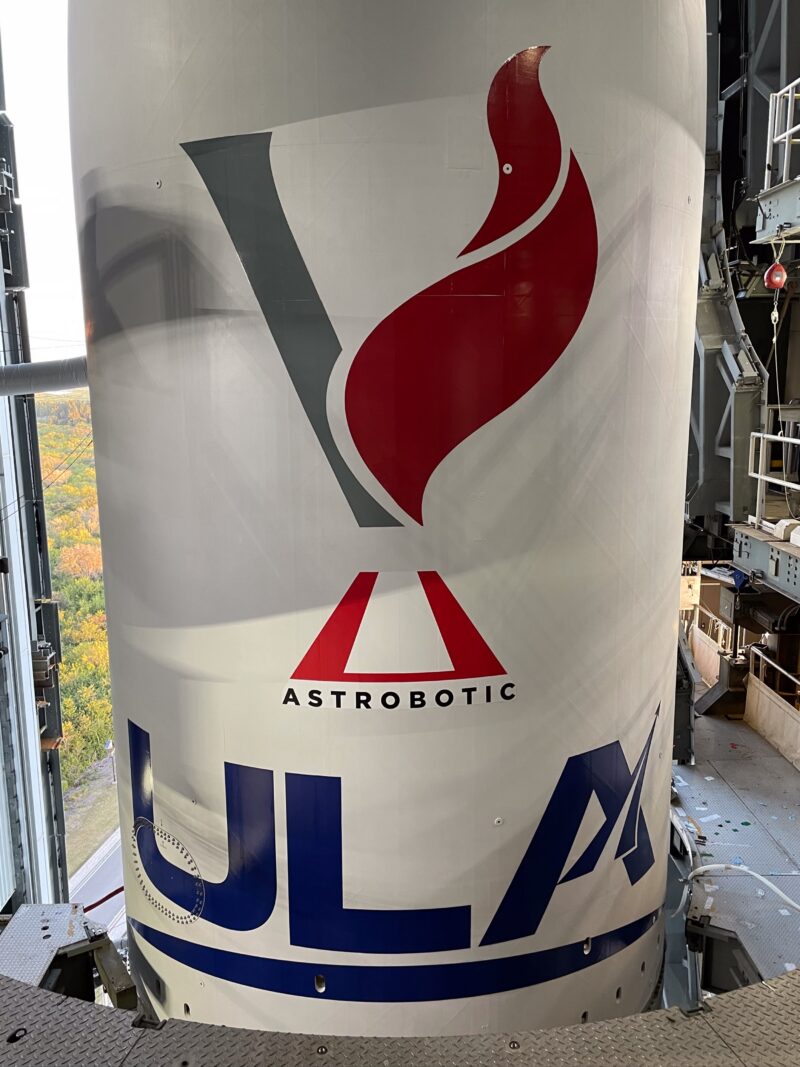
As noted in yesterday’s AmericaSpace story, the Launch Readiness Review (LRR) was conducted Thursday at the Cape’s Advanced Spacecraft Operations Center (ASOC). Led by ULA Launch Director Tom Heter III, the day-long LRR concluded with a definitive “Go” to proceed with launch at 2:18 a.m. EST on Monday, 8 January.
At the end of the review, senior leaders were polled for their state of readiness and added their signatures to the Launch Readiness Certificate. Weather for the early hours of Monday morning is currently trending around 85-percent favorable.
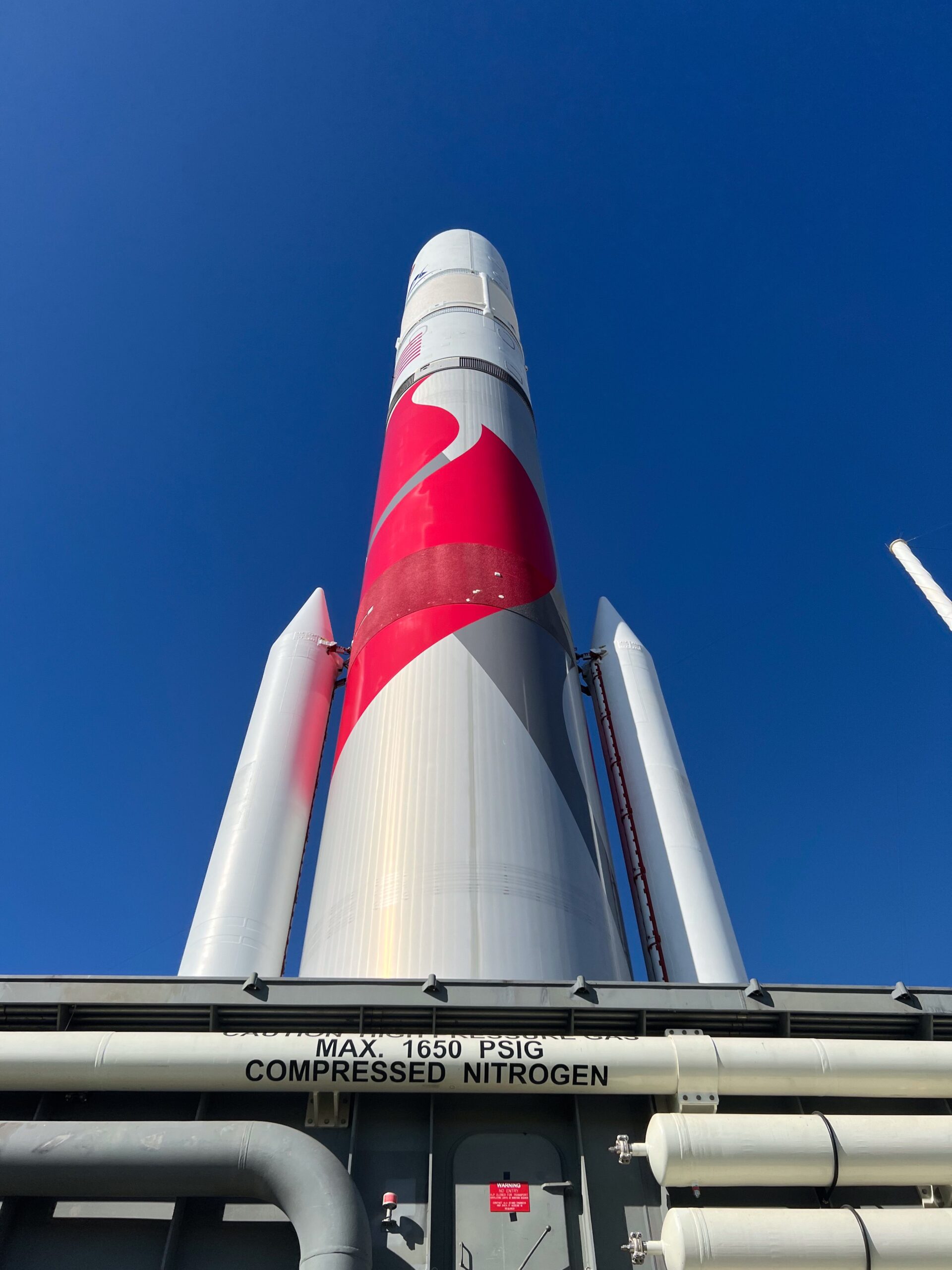
And the weather proved equally optimistic for today’s rollout, as a symphony of well-rehearsed procedures were put crisply into practice. Launch Weather Officer Brian Belson of the U.S. Space Force’s Space Launch Delta (SLD) 45 weather squadron verified that skies over the Cape were clear, winds were acceptable and there was no threat of heavy rain or lightning impinging upon the rollout.
A systems readiness status check was undertaken by ULA Launch Conductor Dillon Rice and following its completion Mr. Heter authorized rollout to commence. Undercarriage jacks raised the Vulcan Launch Platform (VLP), upon which the Vulcan-Centaur sits, from pedestals inside the 286-foot-tall (87-meter) VIF and the striking red, white and gray-painted stack emerged into gorgeous Florida sunshine and electric blue skies began its quarter-mile (400-meter) trek to the SLC-41 pad surface.
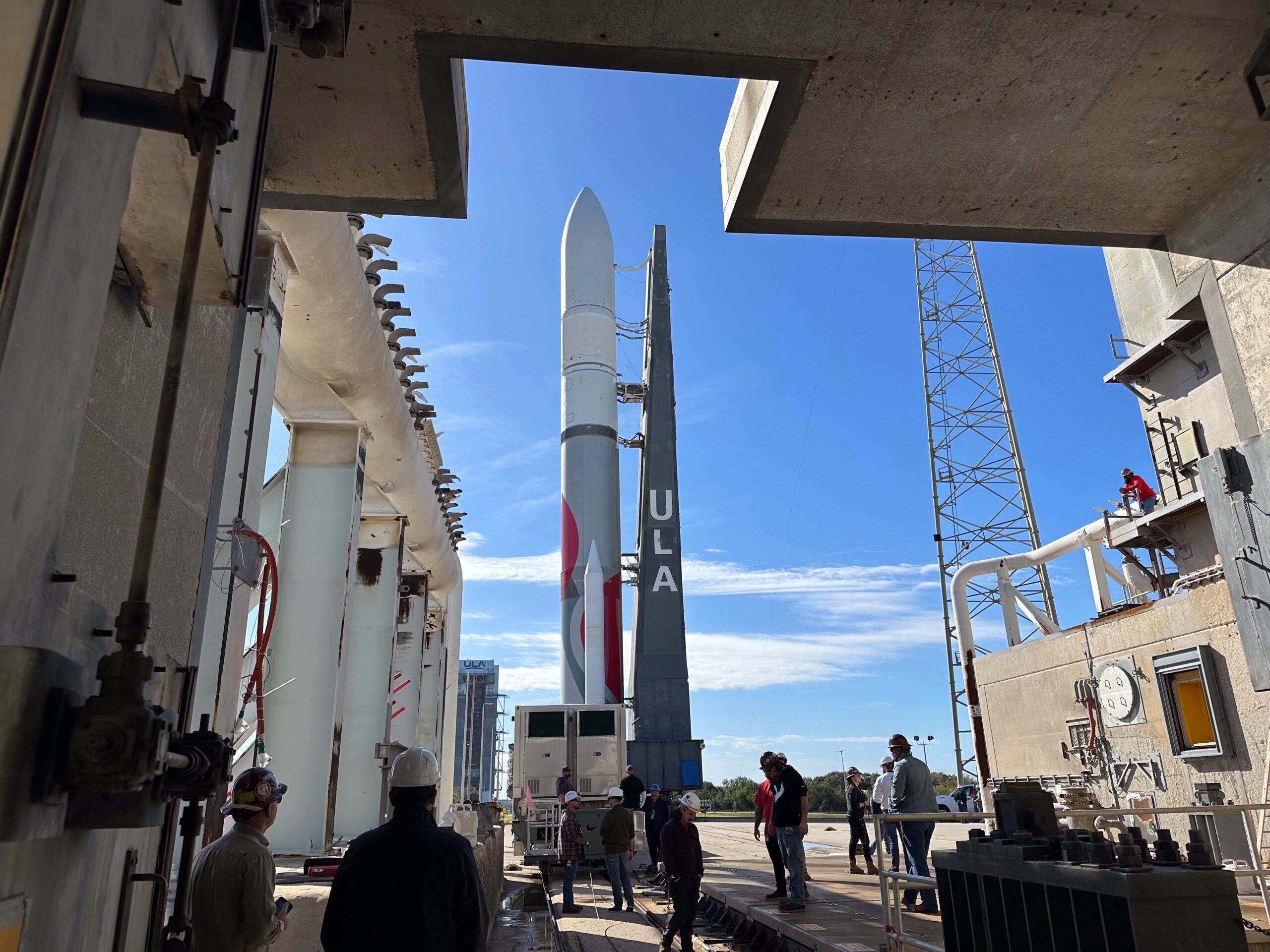
The “hard-down” milestone occurred at 11:33 a.m. EST, when the undercarriage jacks lowered the Vulcan-Centaur and its VLP onto the launch pad piers at SLC-41. Over the coming hours, umbilicals will be connected to pad systems and the environmental control system that feeds conditioned air to the rocket and its payload will be switched to facility supplies, allowing portable trailers used during rollout to be detached.
When fully fueled in the opening hours of Monday morning, the Vulcan-Centaur will weigh over 1.4 million pounds (663,367 kilograms). Its red-and-gray-liveried core stage is powered by a pair of Blue Origin-furnished BE-4 engines; a Centaur V upper stage with two Aerojet Rocketdyne-built RL-10 engines; and up to six Graphite Epoxy Motor (GEM)-63XL solid-fueled boosters, provided by Northrop Grumman Corp.
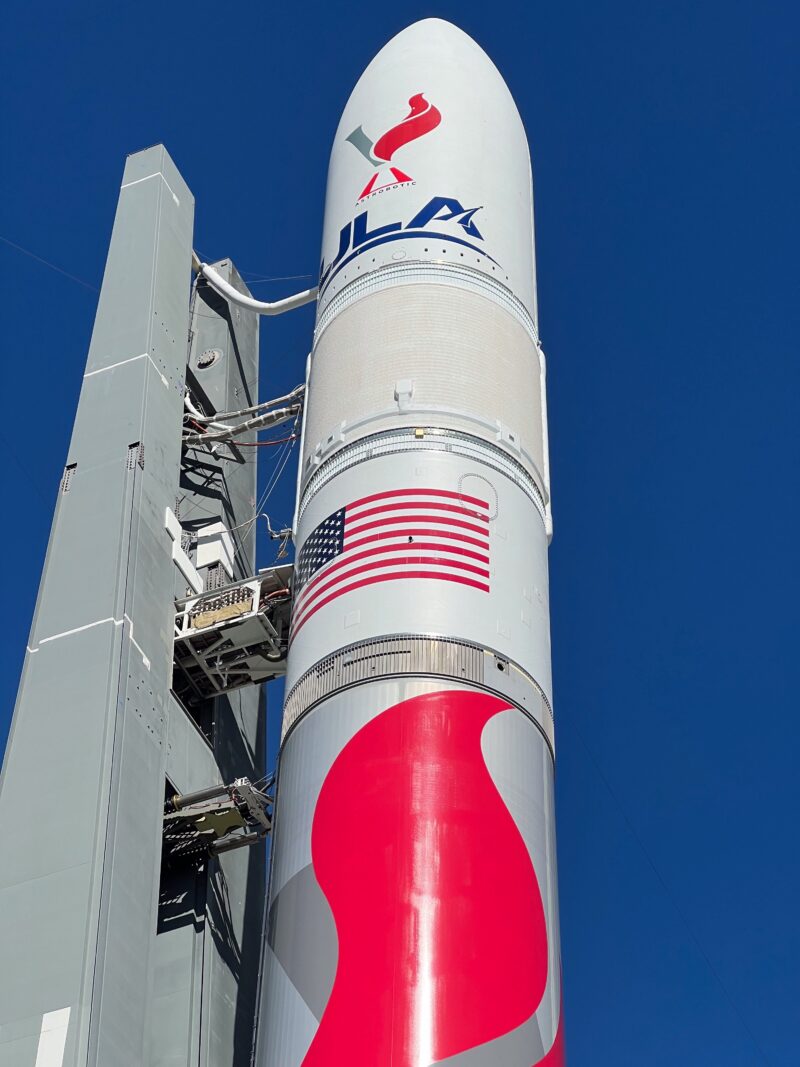
For Cert-1, the giant rocket will fly in its “VC2S” configuration, a clumsy letters-and-numbers nomenclature describing its Vulcan-Centaur heritage, the presence of two GEM-63XL boosters and a “standard” payload fairing. Rising from the pad under a combined impulse of 2.1 million pounds (950,000 kilograms) at T-0, the VC2S configuration can lift up to 23,800 pounds (10,800 kilograms) of payload to low-Earth orbit or 20,300 pounds (9,200 kilograms) to the International Space Station (ISS) or 7,700 pounds (3,500 kilograms) to Geosynchronous Transfer Orbit (GTO) or 5,100 pounds (2,300 kilograms) on a Translunar Injection (TLI) profile to the distance of the Moon.
For Cert-1, the Vulcan-Centaur will deliver Astrobotic’s Peregrine lunar lander with 77 pounds (35 kilograms) of customer payloads to the Moon under the auspices of NASA’s Commercial Lunar Payload Services (CLPS) program. When launch contracts for this mission were signed back in July 2017, it was hoped that Peregrine would launch as early as 2019, “during the 50th anniversary of Apollo 11”, but it was not to be, as the development of the Vulcan-Centaur shifted inexorably to the right.
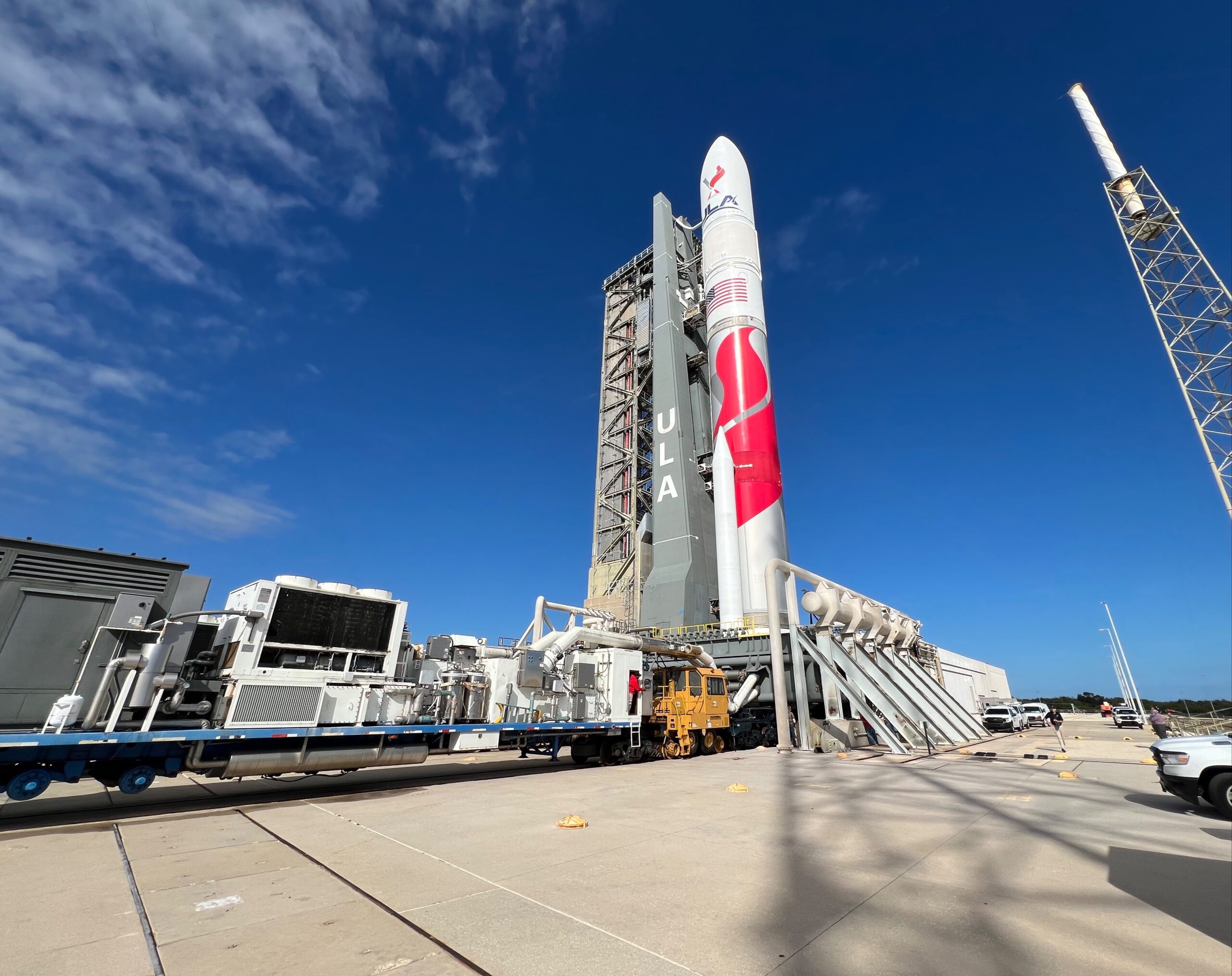
In addition to Peregrine, the Cert-1 mission was originally intended to carry a pair of prototype Project Kuiper global broadband satellites, flying as part of a broader launch contract with Amazon. In April of last year, Amazon selected ULA’s Vulcan-Centaur for 38 launches to deliver a “constellation” of 3,236 Project Kuiper satellites into orbit to make high-speed, low-latency broadband internet provision “more affordable and accessible for unserved and underserved communities”—including households, schools, hospitals, businesses and government agencies—around the world.
However, due to the ongoing delays in bringing Vulcan-Centaur online, Amazon opted instead to fly its KuiperSat-1 and KuiperSat-2 prototype satellites on an Atlas V. That flight took place last fall.
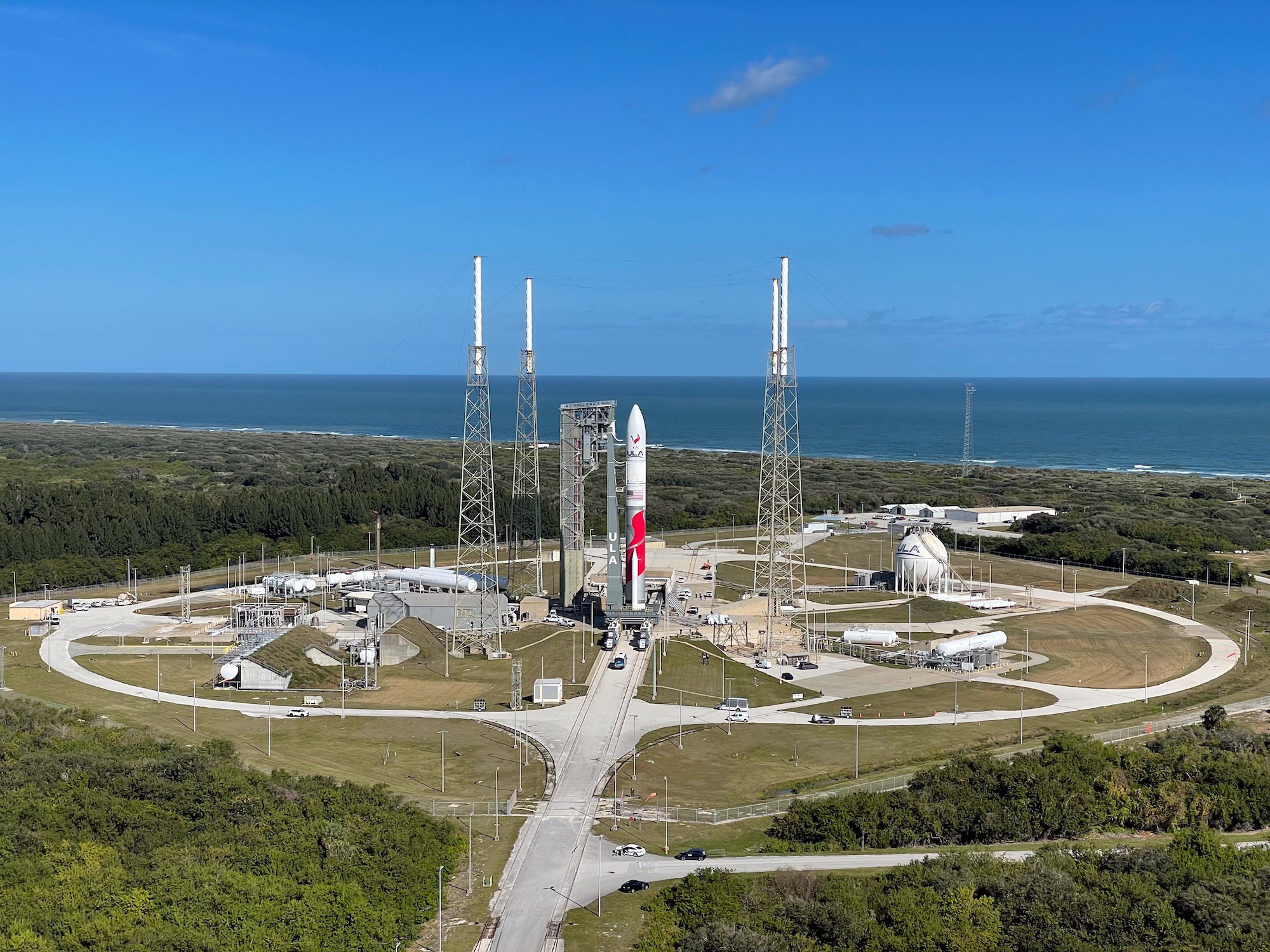
Two years ago, Houston, Texas-headquartered “space burials” organization Celestis, Inc., announced its intent to fly a memorial spaceflight payload, “Enterprise Flight”, on Cert-1. Carrying more than 150 flight capsules with cremated human remains and complete-human-genome individual DNA samples—including Star Trek creator Gene Roddenberry, his wife Majel Barrett Roddenberry, Montgomery “Scotty” Scott actor James Doohan, Leonard “Bones” McCoy actor DeForest Kelley and Lt. Nyota Uhura actress Nichelle Nichols—and messages of greeting and goodwill from worldwide clients, Enterprise Flight will be emplaced by the Centaur V into a stable heliocentric orbit “on an endless journey in interplanetary space”.
AmericaSpace will explore the Cert-1 payload complement and plans for Monday morning’s launch tomorrow.




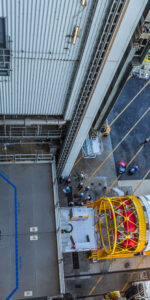
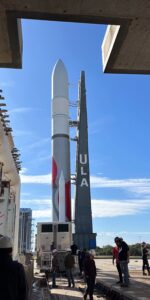
One Comment
Leave a ReplyOne Ping
Pingback:SpaceX Launches Third Mission in 2024’s First Week, ULA Vulcan-Centaur to Fly Tonight - AmericaSpace